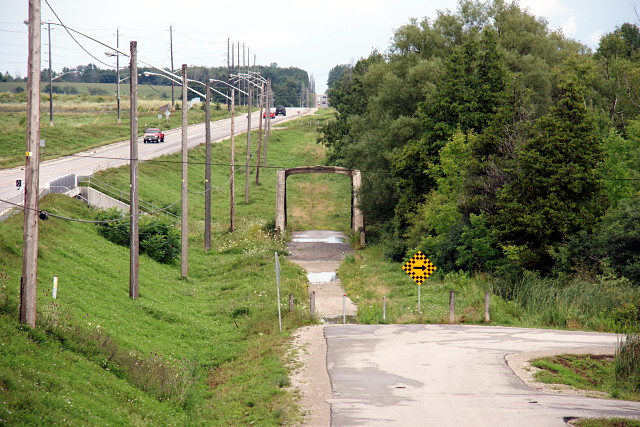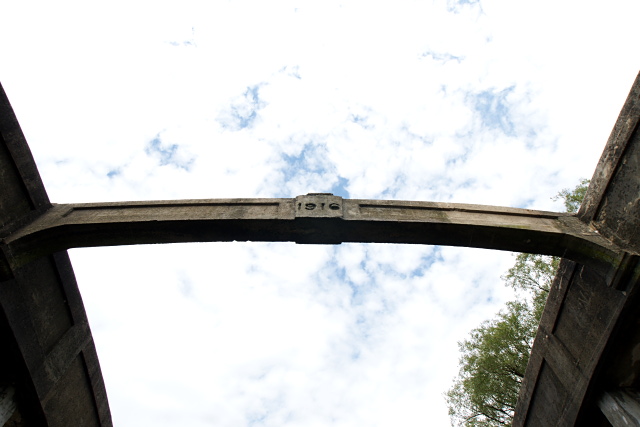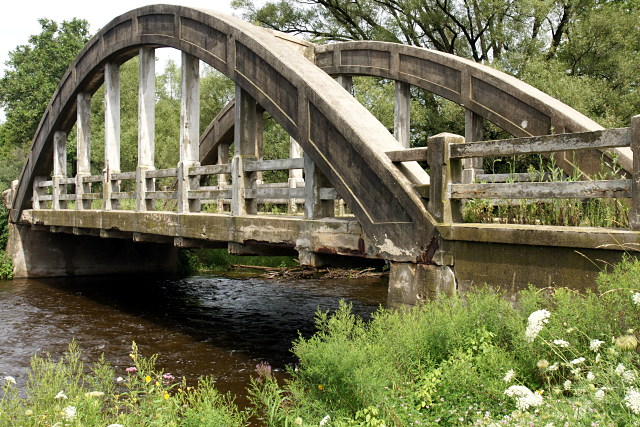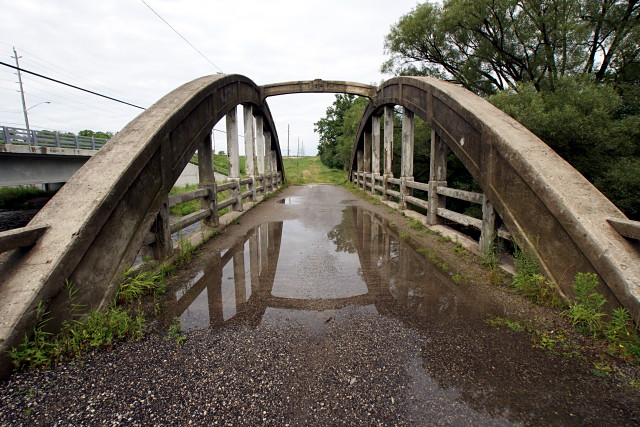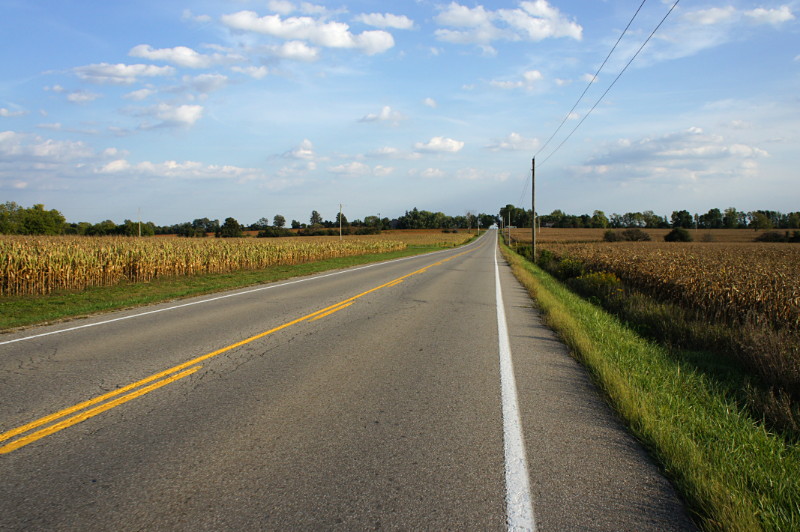
The farm-lined road to Anywhere, southern Ontario.
First, a travel tip for anyone taking a bike into the York Mills GO terminal: the canonical way to get to the bus platforms is to go into the York Mills Centre at the northeast corner of Yonge and York Mills, take the well-hidden elevator up to the second floor, and then walk down a short flight of stairs. It’s not so bad on foot, but it’s an overly complicated two-step when you’re swinging a loaded bike around. It’s way more convenient to ride just a few more metres north up Yonge to the same portal that the buses use and ride in through that as if you owned the place. It’s not only a shorter and easier route to the platform, but it means you don’t have to shoulder your bike down stairs or make everyone in the elevator miserable. It’s also far safer. You won’t be riding into a fare-paid zone, so it’s not like you’re doing anything underhanded.
I made a multi-modal trip to Kitchener this weekend (I’ll write more about that in the future), taking GO Transit to Guelph and cycling from there to Kitchener on Friday morning, and then reversing the trip on Sunday evening. Riding the roughly 28 km from Guelph to Kitchener is unlike riding in the countryside anywhere near Toronto. Oh sure, you’ve got the same corn fields, roadside ruminants, sod farms, rural communities, and quiet country roads, but the terrain is remarkably flat. There were only two noticeable hills for the entire ride and even those were smaller than climbing up Danforth from Coxwell to Woodbine. I’m used to traversing the Oak Ridges Moraine or climbing hills on hills on hills in the Peterborough drumlin field when I ride in the country, so riding somewhere flat is quite a treat.
Highway 7 provides the shortest and most direct route between the two cities, but it’s not very pleasant to ride on. A more southerly route along Wellington 124 is about 5 km longer but it’s at least 10 km nicer to ride on. I took a middle way to Kitchener that had theoretical advantages over taking 124: the route along Fife Road is both quieter and shorter by almost 3 km. It also has a long stretch of riding on dirt roads, which doesn’t usually bother me. It would have been perfect if I hadn’t been riding in Friday’s rain, which begat mud, which begat a poorly functioning drivetrain, which begat sucking the fun out of the ride. I was insanely happy that my hotel room was ready three hours before check-in time. “How are you today Mr. Dodge?” “A little muddy.” “I see that.” In total, the ride from downtown Guelph to downtown Kitchener was 28.5 km and took 90 minutes in the rain with a malfunctioning rear derailleur that left me more or less stuck in an awkward gear.
Sunday’s evening’s return trip was sunny and warm (see the picture above) with a steady tailwind. I took advantage of the tailwind to ride the slightly longer return route along Kossuth Road and Wellington 124. Both of those roads have nice wide paved shoulders for most of their length and are easy to ride on if not quite as scenic as some of the quieter rural roads. The return trip was 30.5 km in just 75 minutes with a tailwind blowing all the way. Not bad for a loaded mountain bike. I’d recommend the Fife Road route if it’s dry and you don’t mind riding on dirt roads. I don’t think I’d do it on my road bike. If you want a smooth ride that’s relatively fast but with less traffic than Highway 7, take Wellington 124 and Kossuth Road. You’ll have to head either north or south to cross the Grand River into town; take whichever way is the shorter route to your ultimate destination.
If you’re so inclined, you can read a more detailed ride report below the fold.
